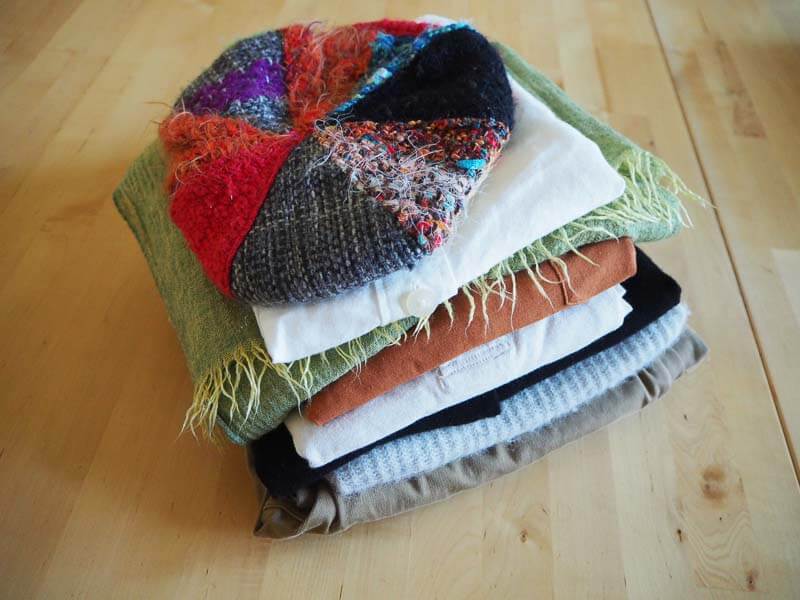
Table of Contents
How to Make Your Wardrobe More Sustainable
Buy second-hand clothing
Look for used clothing locally: Go thrifting. Visit garage sales. Set up clothing swaps with friends or local groups (your neighbors, yoga studio, moms’ group, etc.). Or join your local Buy Nothing group or buy and resell groups on Facebook. This is a great way to lessen the fast fashion environmental impact.
Have kids? Chances are you know someone who has kids’ clothes they can give you. My friend just told me that she’s spent only about $100 on her daughter’s clothes because a friend gives them all their hand-me-downs. Wow!
Buy used clothing online: Try Poshmark, ThredUp, and eBay. For kids clothes, try Owl Tree Kids and the kids’ category on Poshmark.
This has been a game changer for me! I use Poshmark in two ways. First, I buy things that I’m already familiar with. I search for the exact brand, size and color I want, and then I make offers.
Second, I buy used pieces online that I know I won’t wear much, like a beautiful bridesmaid’s dress ($15) or a winter coat ($30) for my son. This is so helpful with kids because they grow out of clothing so quickly! If it’s your first time using Poshmark, you can use the code jennarfrancisco at checkout to get $5 off!
Choose sustainable fabrics
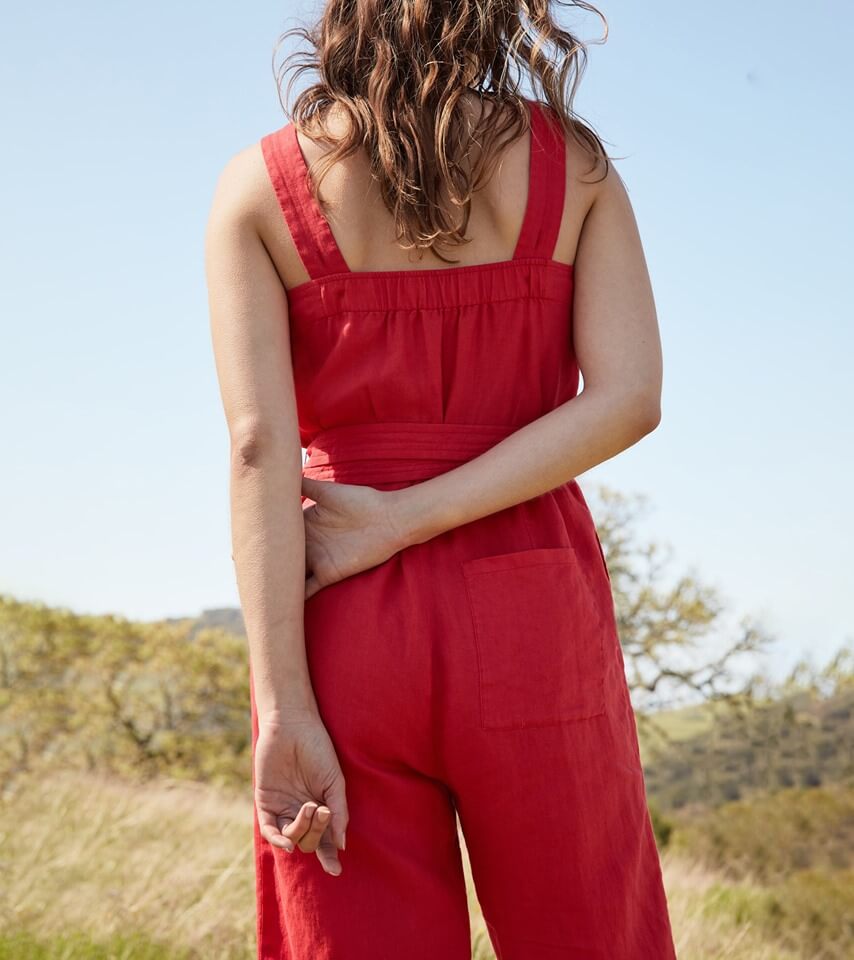
Another way to make your wardrobe more sustainable is to choose fabrics wisely.
First, be smart about synthetic fabrics (polyester, acrylic, spandex, etc.), which are made from chemicals and/or plastics. In some ways, the production of these fabrics is cleaner than natural fabrics, but they cause microplastic pollution and are generally not biodegradable. When they’re eventually thrown out, they’ll sit in a landfill and not decompose. Some clothing makers are now using recycled plastics, which is kind of a good thing, but those fabrics still contribute to the microplastic problem. If you choose synthetic fabrics, wash them as directed below.
When you can, buy items made from recycled fabrics. These include Christy Dawn‘s use of deadstock fabrics, recycled cotton, Adidas’s recycled blends, and Everlane’s ReNew and ReCashmere lines.
Opt for more environmentally friendly fabrics. Unfortunately, natural fabrics also have an environmental impact, from deforestation (rayon) to pesticide use (cotton) and methane emissions (wool). While no natural fibers are ideal, some are better than others. Choose linen, viscose, alpaca, TENCEL™, and hemp. Organic cotton avoids the pesticide issue but requires more water than regular cotton. If you like silk, try this Clean Silk line.
For jeans, check out Everlane jeans, which are affordable and good quality. Everlane denim comes from a clean factory that eliminates much of the waste that goes into producing jeans.
For knits, avoid synthetic blends, which tend to look old and pill quickly. Cashmere is a classic favorite but its rising popularity has been hard on the environment. If you do buy it, look for Grade A cashmere, and note that despite popular belief, the softness of the sweater is not an indicator of quality. Instead, look for cashmere that seems thick and strong. It will soften over time. And give alpaca a try — it’s warm and cozy but easier on the environment than cashmere.
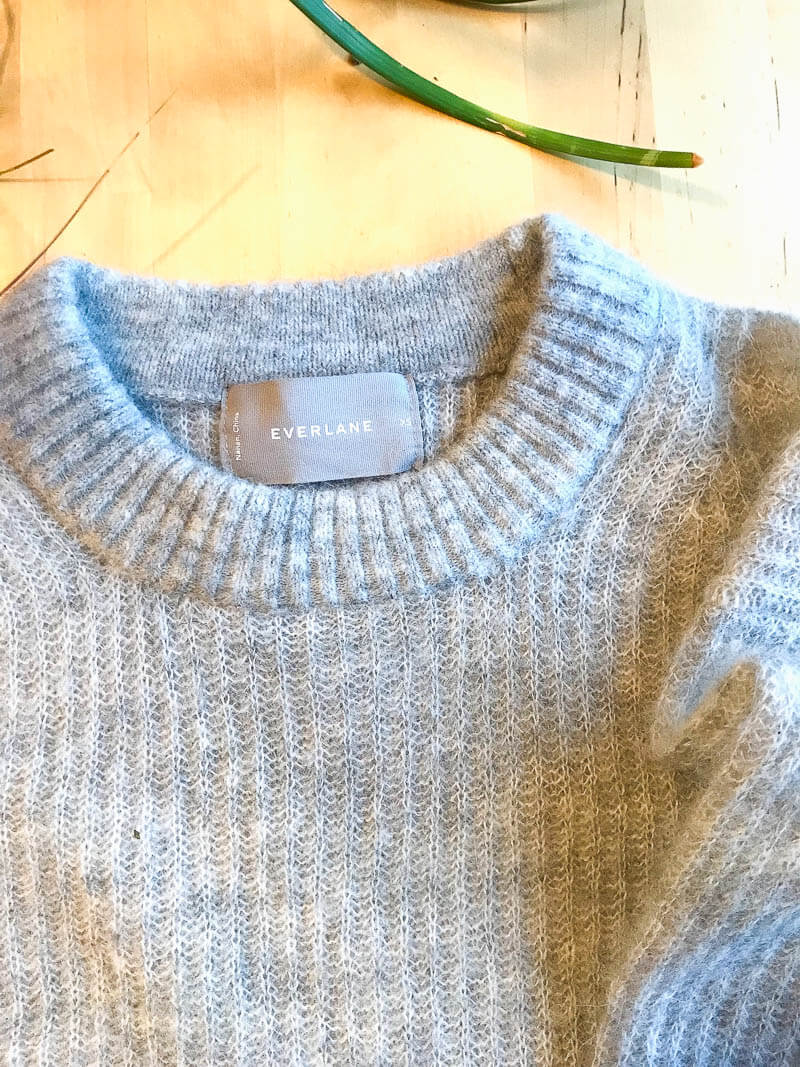
Choose classic, well-made items
This may be obvious, but in our time of fast fashion, it’s easy to buy something cute and inexpensive without considering how it will hold up (or not) in the long run. Maybe a few months later, after seeing it change shape in the wash or start fraying or losing its color, we toss it and move on to something else. But with a little extra effort and time, we can choose items with more care and build a wardrobe that will last years and years.
While shopping, stick with clothing you can actually try on and, when ordering online, be ready to return things that don’t work. Use the fit guides and the customer care people for online retailers–their job is to help you find the piece that will fit!
Go for classic items that can be worn year after year — neutral colors, natural fabrics, timeless cuts. And spend a little time looking at the construction of the clothing. Is the fabric noticeably thin? Do the details look rushed? Is the fabric a blend that will quickly pill or lose its shape? If so, it’s not worth buying. See this new guide to choosing clothes that will last from the New York Times.
Tailor and repair for long life
There are so many options for getting your clothes, shoes and bags tailored and repaired, and this can make a huge difference in extending the life of your purchases and cutting down on unnecessary waste.
Once you make a purchase, get it tailored if necessary so you have pieces that feel good on your body. You can even do some of this at home yourself. When shoes and bags start to wear out, take them to a person who does this kind of repair — I’ve been amazed at the quality work they do!
Wash your clothes sustainably
Wash your clothing less often by spot washing and using a natural deodorizing spray. Washing less often not only uses less energy and water, it also helps your clothing last longer!
Use cold water to wash your clothes, use the shortest cycles possible, air dry your clothes as much as possible, and don’t use your machines during peak energy usage hours (i.e. afternoons and evenings, usually).
Avoid dry cleaning, and when you do, choose a “green” dry cleaner. For more tips, check out Sezane’s guide to caring for your clothes and making them last.
Use a microfiber filter/guppy bag
View this post on Instagram
Synthetic fabrics (polyester, acrylic, spandex, etc.) shed tiny plastic microfibers, which end up in our waterways and eventually even in our bodies! Some experts consider microplastics a much bigger problem than the larger plastics that we already know pollute the oceans.
A microfiber filter can be used with your washing machine to trap lint and microfiber plastics, preventing them from entering our waterways. At $149, it’s a bit of an investment. A more affordable option is a GUPPYFRIEND bag.
A guppy bag traps microplastics that shed from our clothing; all you have to do is put clothing made from synthetic fabrics in the guppy bag, throw the bag into your regular load of laundry, and clean out the trapped microplastic fibers from the bag every so often.
If you don’t have one of these bags or filters, in the meantime try washing with cold water, using the shortest cycle possible, and loading your machine full so that the clothes don’t move around too much. See here for 10 tips to decrease the shedding of microplastics.
Choose brands that work toward sustainability
Despite the challenges, there’s a lot of good news in the clothing industry. More and more brands are talking about sustainability, and consumers are taking notice. One important point here is that the way one brand works toward sustainability can different from another, and as consumers we may have to do a little digging to understand a brand’s work on sustainability.
While I greatly appreciate brands that support charities, use recycled cardboard in their packages, and avoid plastic packaging, what’s more important is the brand’s commitment to sustainable choices in the production of clothing:
the factories that are used — are they LEED certified? Using renewable energy?
the production — are steps taken to reduce chemical use, water waste, and pollution?
treatment of workers — does the brand use factories that pay a fair wage and ensure good working conditions?
the fabrics — does the brand use at least some greener fabrics?
upcycling — does the brand incorporate some reuse of existing materials instead of always using newly-produced fabrics?
The following are some brands that work toward sustainability: (click the name of the brand to visit their website)
Sezane
Sezane makes absolutely beautiful, feminine clothing from France, and it’s affordable. They use better fabrics (including some organic cotton), hire shoemakers in Europe, use leather produced from natural vegetable tanning, and use recycled cardboard in their packaging. Learn about what they’re doing now and their goals for the next year on their sustainability program page.
Organic Basics
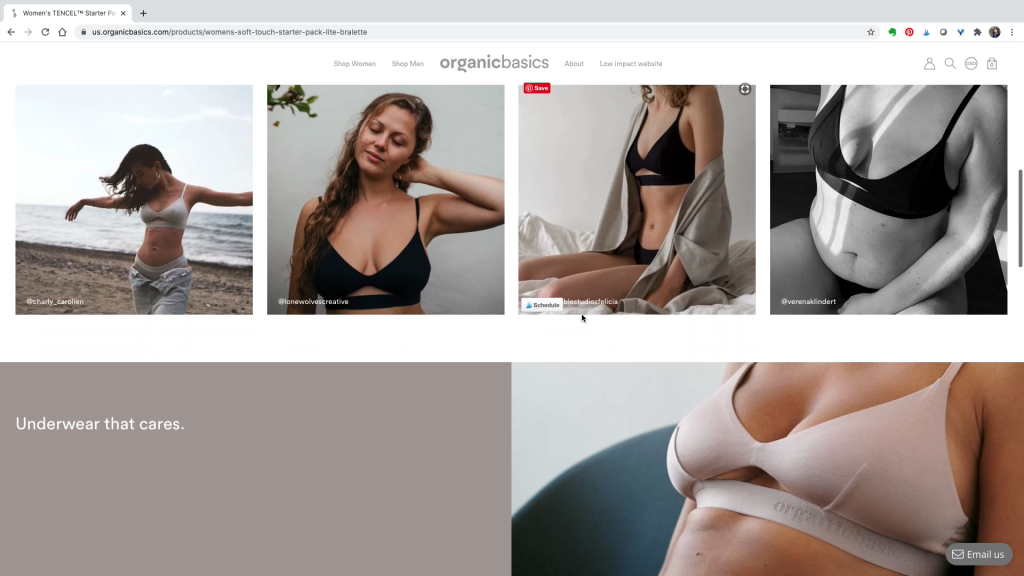
Like the name implies, Organic Basics focuses on basics, like undergarments and tees, for men and women. This certified B-corp includes sustainability and ethical production as their core values. They use sustainable fabrics like TENCEL™, organic cotton and recycled fabrics, in their designs. Learn more about their mission here.
See my Organic Basics Review:
Nisolo
Known for quality shoes that both look amazing and are sustainably made, Nisolo uses a combination of carbon offsetting, ethical practices with their producers, and responsibly sourced leather. Plus, their shoes are so well designed that consumers should be able to keep them for a long time.
Nisolo also encourages the extension of your shoe’s lifespan by participating in a shoe reclamation project. This project allows you to send in your used shoes (any brand), which are then given to a person in need, while you receive a $30 credit toward a new pair. And by the way, they make jewelry and bags, too. Read more about their commitment.
Everlane
Everlane has made mistakes in some areas, most notably in ethical treatment of employees. They’re best known for choice of innovative, energy-reducing factories and for transparency in showing the factories and pricing breakdowns on their website.
What made me a loyal customer is the affordability of their clothes and their initiatives to use less polluting fabrics (like their denim), support charities that work to protect the environment (Surfrider) and human rights (the ACLU), and use upcycled materials (their new ReCashmere), though I’d love to see them offer more recycled and organic fabrics. (Update: they’ve added more organic cotton and will switch to all organic cotton soon).
Their packaging is minimal, and they’re cutting all single-use plastics from their supply chain. Learn more about their approach.
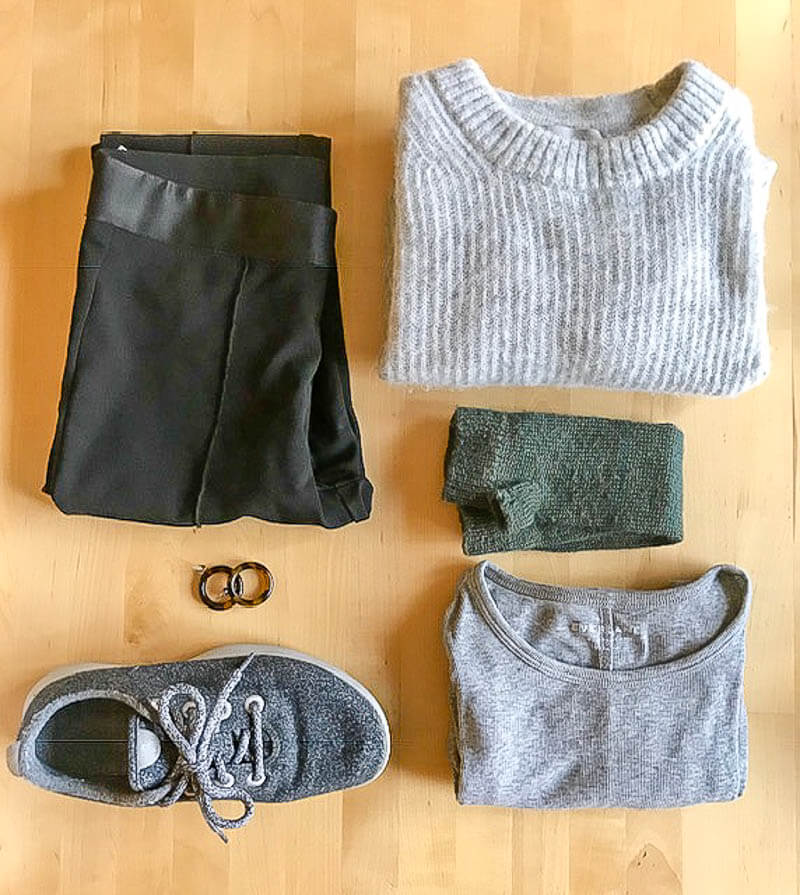
Allbirds
Shoes are a big source of waste in the fashion industry, but Allbirds are tackling the problem with their shoes made of natural fibers. I wore this pair in Europe last winter and can tell you that they are extremely comfortable and great for walking. Plus, they’re a certified B Corp and are going totally carbon neutral this year. Learn about their commitment and see my review of Allbirds trainers.
Christy Dawn
Christy Dawn is known for feminine, vintage-inspired dresses, but what really makes them stand out in my eyes is their upcycling of fabrics. They gather “deadstock,” the leftover fabric not needed by big designers, to create beautiful new designs.
Naturally, such a process means the items cost more than fast fashion, but the clothing are made in L.A. in a safe environment by seamstresses who receive fair wages. (And a side note: the founder, Christy Dawn, is from Placerville, just up the road from my home in Sacramento.) Find out how their clothes are made.
Tradlands
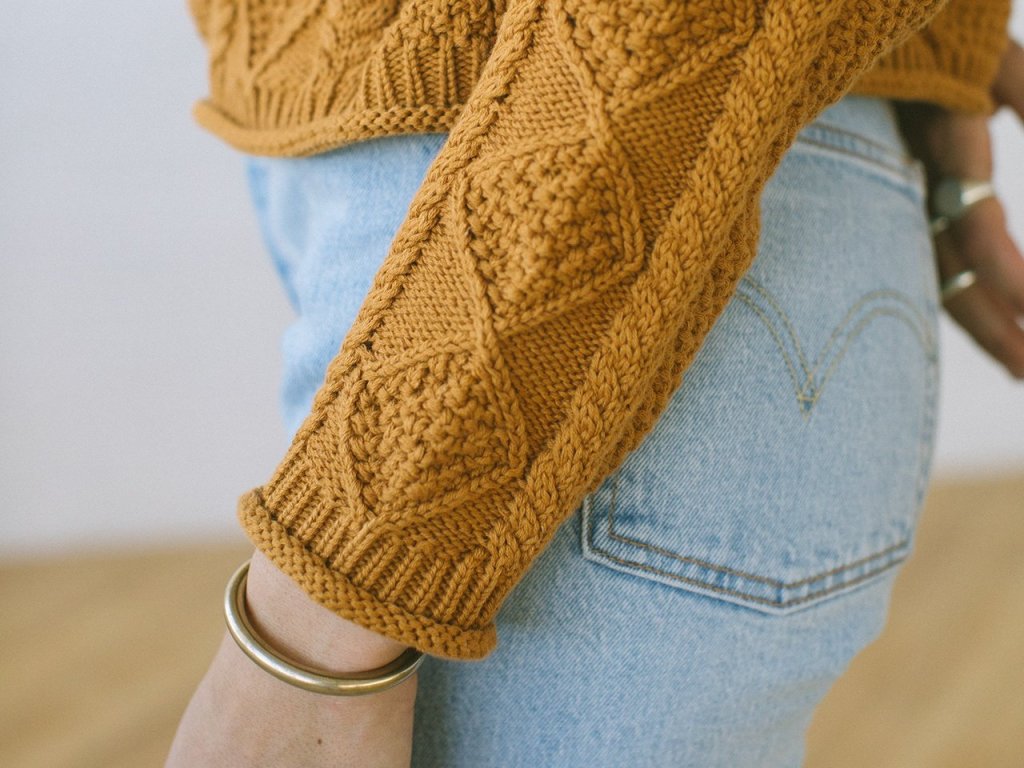
Inspired by the quality workmanship and classic styles found in menswear, Tradlands focuses on quality wardrobe staples in a neutral color palette of mostly earth tones. From the website: “The fabric is smooth and the detailing purposeful. The interior seams are clean and finished. The trims are strong and sophisticated. Our pieces are well-constructed, versatile, and easy to care for.” Learn more about their commitment to sustainability.
Stop supporting brands that don’t work toward sustainability
Amazon, J. Crew, GAP, Nike, and the list goes on and on… Brands have a huge opportunity to take steps toward sustainability, from the fabrics they use and the factories where their clothes are made to the way they package and ship their clothing.
I used to love shopping at J. Crew, but I’ve stopped not only because the quality has gone down, but also because the more I’ve gotten educated about the clothing industry, the less comfortable I am supporting a brand that doesn’t use their power for positive change.
Let your opinions be known
Why, @jcrew ?? Why this totally unnecessary plastic packed inside each T-shirt? How many people know to take this to a plastic bag recycling station? pic.twitter.com/zyOWIJCQRM
— Jenna Francisco (@thismyhappiness) March 6, 2019
Don’t like the way a company uses unnecessary plastic packaging? Do you wish your favorite brands would carry clothes made from more sustainable fabrics? Let them know!
Use what you have and buy less!
Perhaps most important is for us to find satisfaction in using what we already have. This might not replace the quick thrill of buying something new, but every time I do a closet reorganization and see all the stuff I’ve forgotten about, I feel so much better than when I shop for something new.
When you go through your stuff, make a couple of piles: items that you can use right away, and items that may need a good cleaning, tailoring or repair. And use your creativity to think of new ways to wear pieces, like this idea from Jess with Less for wearing a cardigan sweater three different ways.
And you? I’d love to hear your tips for how to make your wardrobe more sustainable
More information on sustainability & clothing:
Report on the environmental impact of apparel and shoes
How much should you pay for cashmere?
Fashion start ups and the Green New Deal





This is such a great post! I love all the brands mentioned. Got my eye on a Sezane sweater for the fall/winter!
Sezane’s sweaters this fall are gorgeous! I have my eye on one, too, but I’m limiting myself to one or two purchases until next spring. That will probably be one of them because they really are special.